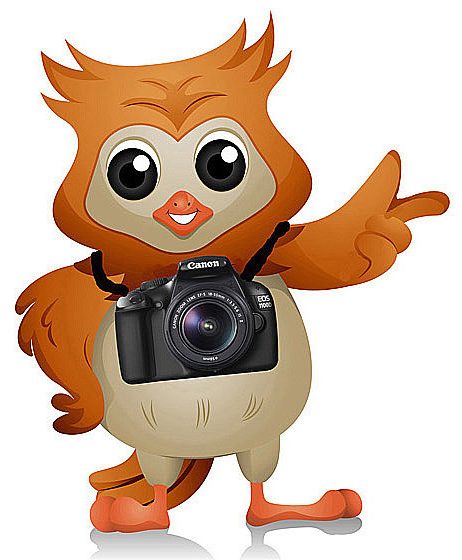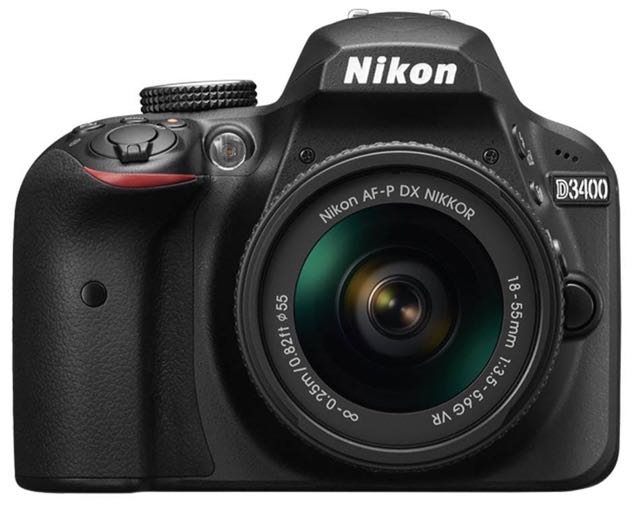Nikon D3400 settings are pretty straightforward. The first thing you need to do is to charge your battery. When you buy the camera you will receive a battery and a battery charger and, although the battery may look like it is fully charged, it is worth just giving it an extra hour or so in the charger to make sure. Once you have charged it, put it into the camera Then attach the lens. The lens and camera both have a white dot. Match the dots and gently fit it into the bayonet socket and then twist the lens anti-clockwise until it clicks.
The next thing you need for your Nikon D3400 is a good memory card. Of course you need a memory card to store the pictures and the videos that you shoot on the camera. We suggest getting a SanDisk card and the reason for that is that SanDisk will guarantee the life of the card. It is important to remember they won’t guarantee what is on the card, but if the card fails SanDisk will replace the card. So the way you put the card into the camera is in the side socket. You open it up by pulling it slightly forward and you put the card in facing to you and just push it in until it clicks. What you will notice is that when you put it in completely, a green light flashes on the back of the camera to say that it is being done properly. On the other side are two other ports these are very useful because they are a USB port, which allows you to transfer your pictures directly from the camera to the laptop, and beneath that an HDMI port which allows you to show your pictures on a TV. Neither of these leads are available in the box so if you want to do either of those things you need to buy the leads separately.
Once you have inserted your memory card, the next thing to do is to switch your Nikon D3400 on. But first what I would suggest you do is you take off the lens cap and activate the lens. Press the button on the side of the lens and extend it out. Once you have done that you can switch on the camera and then you will see, in the back screen, that you have got various choices to make in your D3400 settings. You choose your language – you do that by moving the Cross Keys left to right and up and down and then selecting the language by pressing OK. You choose your date in a similar fashion and you also then choose your time zone in exactly the same way, using the cross keys on the back.
All of these things can be changed later anyway so do not worry too much if you get them wrong, or in fact if you do not want to worry too much about them now and bypass those options and to return to them afterwards. But the next thing to do in your D3400 settings is to format your card. If it is a new card, or an old card for that matter, you need to ensure that it is formatted correctly for this camera. Press the Menu button and then go to the Setup Menu. That is the spanner icon. The second one down in that section is FORMAT MEMORY CARD. There is always an element of danger when you format memory cards, particularly once you have started using the camera. If you format the memory card you delete everything on it – even pictures that you think you have protected will be deleted so you need to be very careful when you format cards. However, when you are doing it for the first time you are perfectly at liberty to go to yes and click OK, and it will format the memory card and attune it to this camera properly.
Now you are in a position to take a picture or shoot a video. You can either do this through the Liveview screen which enables you to see what is through the lens or you can do this through the more conventional DSLR way which is to look through the viewfinder. The viewfinder can be tuned to your eyesight, so if you look through the viewfinder and, although the camera says what you are looking at is sharp, it does not look sharp to you, you can use the Dioptric Adjuster which is on the side here to change the focal length of the viewfinder, which means that you can look through it and it looks sharp when in fact the camera says it looks sharp. That is very useful so take some moments just to focus and refocus on a few different things and just check that the viewfinder, when you are looking through it, looks sharp when the camera says that it is sharp.
One of the things that I change straight away in my Nikon D3400 settings is the Auto Timer because cameras have timers on them now in order to help save the battery life and that means that sometimes they switch themselves off and it can be really annoying. But you can set your own Auto Timer lengths by going into the camera and into the Menu Settings so if you go into menu and you go into the Setup Menu then, by going down onto the next page – there are quite a lot of settings here, you will see AUTO OFF TIMERS as an option. If you select that then you can either select Short, Normal or Long or you can go down to Custom and you can select those lengths of time that you prefer and that is what I do. I go down to Custom and check the ones that I want which are PLAYBACK and MENUS IMAGE REVIEW which is the length of time the images are on the back screen for you just to look at after you’ve taken it. LIVEVIEW which is the Liveview screen, and the STANDBY TIMER which is how long the camera sits on standby before it switches itself off.
You can shoot pictures with your Nikon D3400 now, but the best thing to do is to select your image quality and your compression quality before you do. So the first thing to do is to go back into menus and in this instance we are looking at the Shooting Menu. If you go to there in your D3400 settings, the first thing you come across is IMAGE QUALITY. Now image quality talks about compression rates not about the file size, but the compression rate is important. You can shoot RAW images with this camera but I would recommend, initially at least, shooting JPEG and the option I would choose would be JPEG fine because that is the best quality compression rate for JPEGs for this camera. Once you have done that you move one down to IMAGE SIZE and again there is no point shooting medium or small images with this camera. I would say the best thing to do is to shoot large images. Bear in mind that the memory card is probably big enough, with a 16 or 32 gigabyte memory, to shoot hundreds of pictures so you are not limited by memory space as we once were so there is no reason not to shoot large and not to shoot fine JPEG images. As we are in the Shooting Menu in D3400 settings, why don’t we go down one more from IMAGE SIZE to ISO SENSITIVITY SETTINGS. When you switch the camera on for the first time then the D3400 settings are set so that the Auto ISO Sensitivity Control is on and that the camera will choose the ISO setting and if you look below the Auto ISO Sensitivity Control, it will set the maximum sensitivity according to what is chosen there. When you switch it on for the first time the maximum is 25,600. I would say that when you are taking normal pictures you probably do not want to go above 1600 ISO – possibly 3200. By leaving it as it is you allow the camera to choose far higher ISOs than you otherwise might wish, so if you go into this setting, I would suggest that you make the maximum setting as I say 6400 and I would also switch the ISO Sensitivity Control off because that then means that you have more control over the ISO in the basic D3400 settings and also in the manual settings.
After setting the ISO I would stay in the Shooting Menu in the D3400 settings and move one down again to WHITE BALANCE. Now it is important initially that white balance is on AUTO. What white balance does is it sets the white in the picture or video. Now, if you know anything about colors, you know that white is a combination of all colors and so once the camera can set white it can also set the values for all the other colors. So it is very important and it is also very important if you are shooting somewhere where the balance of light is not normal – for example if you are shooting in an office where the light may be slightly blue or if you are shooting at home under artificial light where the color of the light might be slightly yellow. You are not going to see this with your naked eye because your brain manages to filter those tones and those colors out, but the camera will see it and it is important that the camera initially is on AUTO so that it can set the white balance itself and try to balance all of the different color components that it sees through the lens.
The last thing I want to mention is very useful once you have taken your pictures. If you go into Playback Menu once you have taken a picture and go down to PLAYBACK DISPLAY OPTION then you will see that you have options that give you information on the picture once you’ve taken it. So you have got the options in your D3400 settings of showing the HIGHLIGHTS the RGB HISTOGRAM SHOOTING DATA and OVERVIEW. These are really useful bits of information and they are useful for you to recall and go back to once you have taken the picture and you just want to see what settings you had, or actually during the live shoot when you can see with the RGB histogram or the tonal histogram where your picture may be failing or just not working to its optimum. So they are very useful things to have, and by allocating and switching those on when you go into playback mode and you look at your pictures by pressing the cross keys up or down you will be given these pieces of information with the picture also viewable on the view screen. It is a really useful way of just keeping control and keep an eye on the various options and settings that you have when you take a picture. So, for example, it will give you the histograms but also the ISO. It will give you the focal length, it will give you all the various autos in terms of white balance or whether the flash was on etc. In the old days when you were shooting with film you would have taken a notebook and written all of this down but because it is available on the back screen it makes it a whole lot easier. As you can see, getting your D3400 settings right is not difficult and means that you will get the best out of your Nikon D3400 straightaway.
Click on this link to find out more about the Nikon D3400 settings


